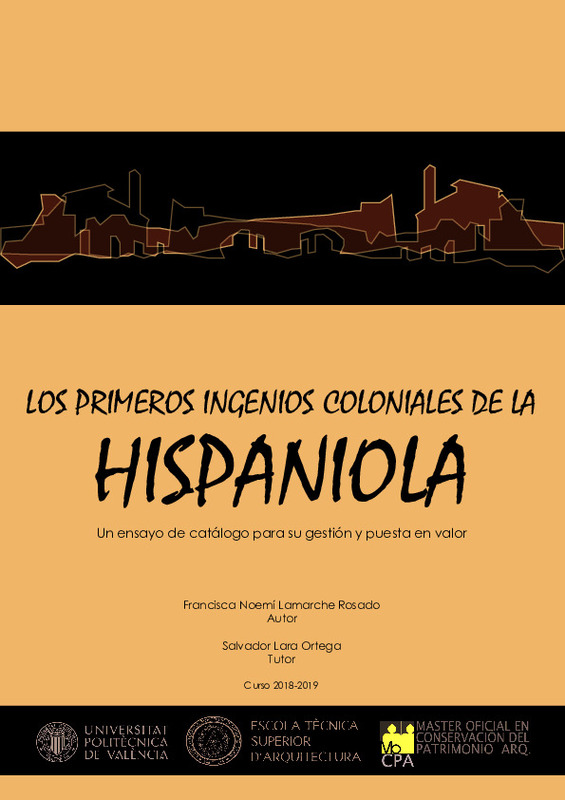JavaScript is disabled for your browser. Some features of this site may not work without it.
Buscar en RiuNet
Listar
Mi cuenta
Estadísticas
Ayuda RiuNet
Admin. UPV
Los primeros ingenios coloniales en la Hispaniola: un ensayo de catálogo para su gestión y puesta en valor
Mostrar el registro completo del ítem
Lamarche Rosado, FN. (2018). Los primeros ingenios coloniales en la Hispaniola: un ensayo de catálogo para su gestión y puesta en valor. http://hdl.handle.net/10251/114426
Por favor, use este identificador para citar o enlazar este ítem: http://hdl.handle.net/10251/114426
Ficheros en el ítem
Metadatos del ítem
| Título: | Los primeros ingenios coloniales en la Hispaniola: un ensayo de catálogo para su gestión y puesta en valor | |||
| Autor: | Lamarche Rosado, Francisca Noemi | |||
| Director(es): | ||||
| Fecha acto/lectura: |
|
|||
| Resumen: |
[ES] Hace quinientos veintiséis años, la isla de La Hispaniola fue el escenario de uno de los encuentros más dramáticos de la historia de la humanidad. Después de decenas de milenios de separación prácticamente total, los ...[+]
[EN] Five hundred and twenty-six years ago, the island of Hispaniola was the scene of one of the most dramatic encounters in the history of mankind. After tens of millennia of almost total separation, the peoples of the ...[+]
|
|||
| Palabras clave: |
|
|||
| Derechos de uso: | Reserva de todos los derechos | |||
| Editorial: |
|
|||
| Titulación: |
|
|||
| Tipo: |
|
Localización
recommendations
Este ítem aparece en la(s) siguiente(s) colección(ones)
-
ETSA - Trabajos académicos [4839]
Escuela Técnica Superior de Arquitectura







